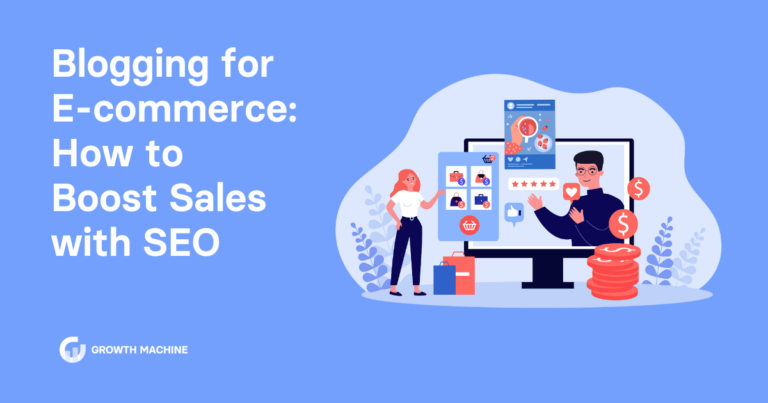5 Ways to Get the SERP Features in Your Niche
Many of today’s SEO conversations center around how to get your business to rank higher on the search engine results page (SERP). But while improving your content to get to the top of the page is important, SERP features are equally valuable real estate that can’t be overlooked, especially if your goal is to boost online visibility.
Today’s SERP features go beyond the traditional organic search results. The more you familiarize yourself with them, the more you can uncover innovative ways to capture user attention and climb to the top of the SERP.
Let’s unpack exactly what SERP features are and how you can optimize your website content to build your online presence.
What Are SERP Features?
SERP features refer to the various elements that appear on Google’s search results page. You can think of them as a giant filter designed to help searchers find answers to their queries faster.
They also happen to be a crucial part of enhancing your site’s search visibility.
Over 8.5 billion searches are processed by Google every single day, and Google is making it easier and easier for searchers to find the answer they need.
A quick glance at the results page will reveal a number of components that you might have overlooked in the past. SERP features offer users much more than a list of blue links directing them to a website. These are some of the most common SERP features you might encounter:
- Featured Snippets: Short excerpts from webpages that directly answer user queries without having to click any links. These are displayed at the top of search results, often referred to as “position zero.”
- Knowledge panels: Found on the right side of the search results, they provide a comprehensive overview of entities like businesses, celebrities, or landmarks, and are aggregated from various information sources.
- Local packs: Specialized listings that appear for local search queries, highlighting nearby businesses or services on a map, along with key details like addresses, reviews, and hours of operation.
- Product listings: Especially important for businesses in e-commerce and retail, these enhance the visibility of products directly within search results, providing valuable information to customers who are considering making a purchase. They may include star ratings and feature short excerpts from product descriptions or reviews.
- Image carousels: A horizontal scroll of Google images related to the search query that allow users to visually browse through a collection of relevant photos, and often accompanied by brief captions or titles.
5 Strategies to Maximize Your Brand’s Online Visibility Through SERP Features
Capturing SERP feature real estate takes strategic planning. By blending these SEO best practices and content optimization tactics, you can increase your chances of visibility on the search results page.
1. Target Featured Snippets
If you want your brand to appear in Featured Snippets, understanding user intent is key. Here are some strategies you can explore to increase the chances of your content capturing a Featured Snippet.
Identify Opportunities for Featured Snippets
Tools like AnswerThePublic and Google’s “People Also Ask” box can help you find related questions and narrow in on search intent to better understand what your audience is looking for.
Taking these user needs into consideration can help you create better content by ensuring that it provides clear, concise answers to common questions. The more succinct, the better!
If you’re still feeling stuck, take a look at current Featured Snippets in your industry or niche. What are your competitors writing about? What gaps or opportunities exist to provide a better answer? Chances are, there’s always something you can improve upon.
Pay Attention to Content Structure
The quality of your content is imperative if you want to capture a Featured Snippet. But in the quest for quality, don’t overlook the basics of content structure.
For example, you can use headings that are phrased as questions commonly searched by your audience. Then, underneath those headings, provide clear and concise answers, aiming for an optimal length of around 40-60 words.
You can also use things like lists, tables, and bullet points in your content, as these tend to be pulled into Featured Snippets. In particular, use these formats to present steps, comparisons, rankings, or groups of information.
Update Your Content Regularly
One of the biggest factors that influences your content’s likelihood of being selected for a Featured Snippet is content freshness.
Having fresh content means keeping it relevant. To achieve this, revisit your top-performing blog posts and long-form content every so often to make sure the information is still current. Add any new updates or additional details that you think might make it more valuable to your audience.
These changes not only drive new traffic to older pieces of content, they also signal to search engines that the content is valuable and increase the chances of your website being featured in Google’s Featured Snippets.
If you’re feeling overwhelmed by the need to refresh old content as well as continuing to produce new content, a reliable partner can help. Growth Machine produces a minimum of 1-2 articles per week for clients, but sometimes 5 per week or more, in order to get the best possible results for clients.
Consider Creating an FAQ Section
FAQs are a great tool for addressing common questions about your business, but beyond that, they also play an important role in capturing SERP features.
Since Featured Snippets often provide direct answers to user queries, a well-crafted FAQ page on your website can align perfectly with the type of content Google looks for when selecting Featured Snippets.
2. Integrate Target Long-Tail Keywords
To capture SERP features effectively, you need to integrate relevant keywords into your content that align with what users are searching for. That all starts with effective keyword research.
When conducting keyword research for our clients, we incorporate long-tail keywords, which are particularly effective for capturing SERP features. Here’s why:
Specificity and Relevance
Long-tail keywords tend to be more specific and often less competitive than shorter, generic keywords. By targeting these specific search queries, your content is more likely to be seen as relevant and directly answer users’ questions, which makes it a prime candidate for SERP features.
Higher Conversion Rates
Since long-tail keywords often have a clear intent, they tend to lead to higher conversion rates.
For instance, someone searching for “best organic cat food for senior cats” is likely closer to making a purchase than someone searching “cat food.”
By targeting these intent-driven searches, you have a better shot at being included in SERP features that cater to specific user needs, such as product listings or reviews.
Content Depth and Quality
Targeting long-tail keywords often involves creating more detailed, informative content. This type of content is almost always favored by Google for SERP features.
By creating in-depth content around specific, long-tail topics, you also boost your site’s authority, increasing the chances of obtaining a SERP feature.
Improved User Experience
Tied closely to the quality of the content, focusing on long-tail keywords means that you’re more likely to address the specific needs or questions of your audience, which ultimately results in a better user experience.
A great user experience not only leads to higher engagement and click-through rates on your content, it also sends positive signals to search engines, which can influence your appearance in SERP features. It’s a win-win.
3. Leverage Knowledge Panels
Knowledge Panels are a great way to increase your authority and build trust with users. They aggregate and display key information about businesses, prominent public figures, landmarks, drawing from a wide variety of sources that Google deems trustworthy.
Here’s how you can optimize your website content to increase your odds of being featured in a Knowledge Panel.
Establish Authority with a High-Quality Content
To be viewed as a credible source, your website needs to be up-to-date, use consistent branding (including logos, taglines, and messaging), and accurately reflect what your business is all about.
Increasing your page authority requires a multi-pronged approach, and should go hand in hand with a comprehensive SEO strategy. But it all starts with creating relevant content that’s optimized for SEO.
Writing content that’s stuffed with keywords isn’t enough on its own these days. If you truly want to master SEO, you need to ensure that content is informative, accurate, offers unique value, and covers your topic thoroughly.
That’s where a reliable and experienced content creation partner comes in. At Growth Machine, we work with clients to develop a strategic approach to content marketing that brings more customers into your sales funnel. Our strategy increased traffic by 5,609% for a functional mushroom company who needed help establishing authority in their niche.
Acquire Quality Backlinks from Credible Sources
If you’ve worked in SEO long enough, you’ll know that backlinks from reputable and authoritative websites are the best way to enhance your website’s credibility.
Effective linkbuilding is a must if you want to get on Google’s radar for higher rankings. Quality site links essentially serve as a vote of confidence to search engines indicating that your website is trustworthy. And that trust is critical if your goal is to capture SERP features like Knowledge Panels.
Leverage Social Media and Wikipedia
It may come as a surprise to learn that SEO isn’t solely based on your business’s website or content. External profiles, such as social media profiles or a Wikipedia page, can significantly boost your search page presence, without paying for costly Google ads.
You can prove your trustworthiness to search engines by creating and maintaining active profiles on the major social media platforms, such as Facebook, LinkedIn, Instagram, and X (formerly Twitter).
To further boost your credibility and drive more traffic to your website, make sure all social profiles are linked to your website.
Aside from social media, consider creating or updating a Wikipedia page for your business. A recent study found that Wikipedia external links generate $7-$13 million worth of monthly traffic to external websites.
It’s completely free to create a Wikipedia page for your business, so it’s a no-brainer if you want to increase your traffic and online reputation.
4. Optimize for Local Packs
Local Packs are prominently displayed on Google’s search results for local queries. They include a map pack with pinned locations, alongside key business information, and are incredibly important for local businesses who are looking to enhance local SEO and visibility.
Optimizing your website content for Local Packs can be done in a few key steps.
Google My Business Optimization
If you haven’t done so already, make sure you have a Google My Business (GMB) listing. Claim and verify your listing information to gain control over it and boost your visibility in local search results.
Once you’ve claimed your listing, make sure your Google Business Profile is filled out with comprehensive, up-to-date information, including your business name, phone number, and hours of operation.
You can also select categories that best describe your business to help Google understand and categorize your business more effectively.
Include Local Keywords in Your Content
Remember: Keywords should always be relevant to your target audience and reflect user search intent.
At a local level, this might include keyword tails or search terms like “near me” or “in my area.” You can also incorporate the names of geographic regions or areas where your business operates in your homepage, contact page, and service pages.
Focus on On-Page SEO
If people in your area can’t find you, you risk losing out on a ton of potential business.
One of the best on-page SEO strategies for local search is to include NAP citations (Name, Address, and Phone Number) on each page of your website, preferably in the footer.
You can also focus your content creation on topics that resonate with your local audience. Think blog posts that highlight local events, news, or activities in your area, which can boost your local relevance.
Encourage and Respond to Customer Reviews
One of the best ways to boost your credibility in the eyes of search engines and your customers is through positive reviews on your GMB listing.
Have a customer who’s highly satisfied with your product or service? Encourage them to leave a review.
Remember to actively respond to all reviews — the good and bad — in a professional manner to show engagement and commitment to customer satisfaction.
5. Utilize Image and Video in Your Content
If you want to capture the SERP features, it will take more than just great writing.
To capture visual SERP features, such as image packs and video carousels at the top of the search results page, you must integrate high-quality multimedia elements like images and videos into your content.
Google often pulls video or image content to answer specific queries. For example, queries that are inherently visual (such as “how to tie a tie”) are better answered with a well-placed image or video tutorial, rather than trying to explain via text. These are especially common for capturing Featured Snippets.
Visual content doesn’t just help capture specific SERP features, it also makes your content more engaging, which leads to users spending more time on your page. They can help break down complex topics more easily, improving information retention, and improving visibility by making your content more accessible to a wider audience.
Here are some best practices for using image and video in your SEO strategy:
Alt Text and Descriptions
Use descriptive alt text for images where possible to help search engines understand the content and context of your visuals.
File Names and Formats
Choose clear, descriptive file names for your images and videos and always opt for web-optimized formats to ensure fast loading without compromising quality.
Sitemaps and Structured Data
Include your images and videos in your sitemap and schema markup to provide search engines with more information about your visual content.
Measuring the Impact of SERP Features
Securing your brand’s spot in the SERP features is only one half of the SEO equation. Once you’ve earned that placement, monitoring your SERP feature performance is critical to make sure your brand stays there.
Here are a few steps you can take to get started.
1. Utilize Analytics Tools
Tools like Google Analytics and Search Console can help you track various metrics related to your website performance and user behavior. Take note of how much traffic is coming to your site from organic search and which pages are the most visited.
2. Monitor Click-Through Rates (CTRs)
Click-through rate is the percentage of users who click on your website link after seeing it in the search results. It can help you better understand how users are interacting with featured content, as well as evaluate the overall attractiveness of your search listings.
Pay close attention to the CTR of pages appearing in SERP features (such as Featured Snippets, Local Packs, etc.) versus your standard listings, as this can indicate the effectiveness of your content optimization strategies.
3. Track SERP Feature Visibility
Google’s search algorithms are ever-evolving. To keep your finger on the pulse, you’ll need to track how consistently your pages are appearing in SERP features over time, then segment that data to analyze the performance of different types of SERP features.
4. Keep an Eye on the Competition
Keep your friends close but your enemies closer — especially when it comes to SEO analysis. Monitor which SERP features your competition is capturing and how their content compares to yours. This can provide valuable insights into areas for improvement or new content opportunities.
5. Refine and Adapt
When it comes to SEO, the best strategy is to always stay one step ahead of the curve.
Use the data you’ve gathered to continuously refine your content. Adapt to what’s working, evaluate what’s not, and constantly explore new ways to maintain or improve your SERP feature placements.
Attract the Audience You Need
By understanding and optimizing for SERP features in your content marketing strategy, you can significantly boost your business’s online visibility and credibility and get to the top of the page every time.
Not only does this drive more traffic and conversions for your business, it also creates a more engaging and informative experience for your audience.
Our team understands how to adapt to the ever-evolving nature of search engine results and user behavior. Contact us to learn how you can get a leg up in the digital landscape with a winning content strategy that captures the SERP features and gets more eyes on your business.







